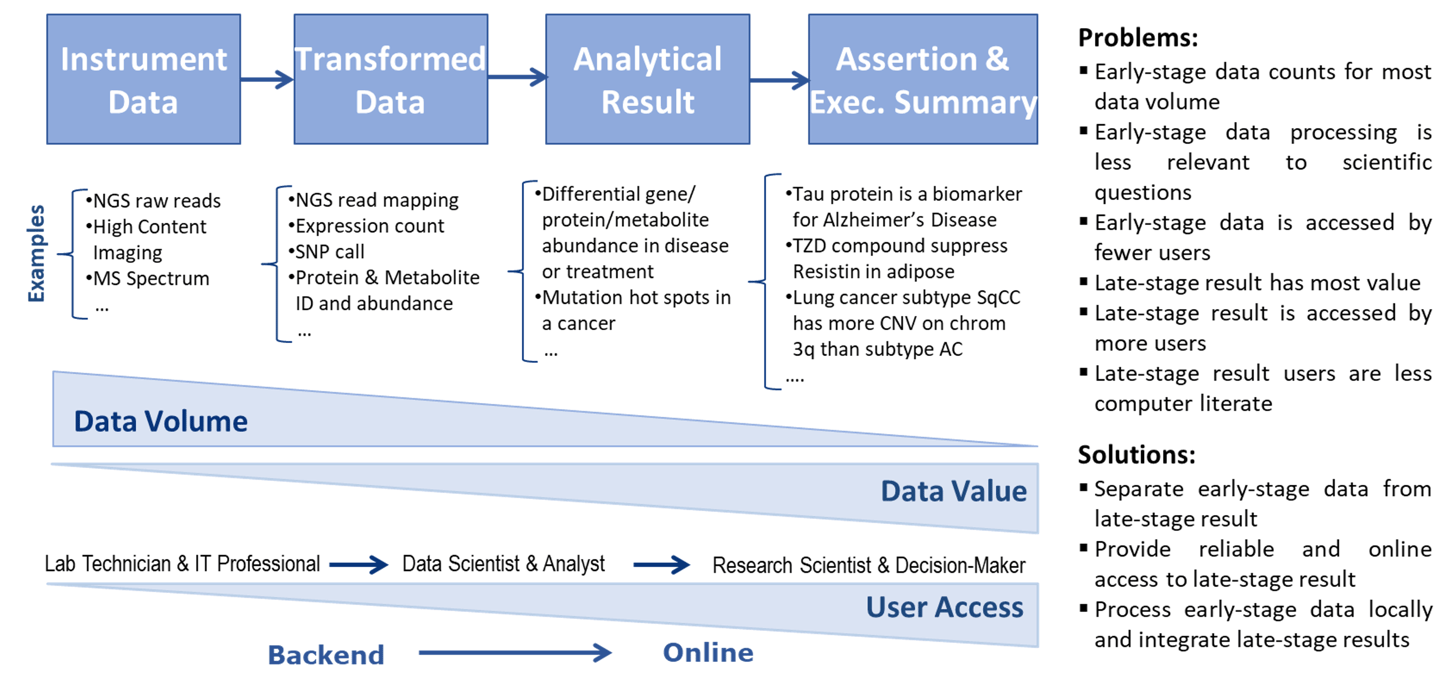
Services for Biotech and Pharma R&D
Our core competencies encompass comprehensive analysis of multi-modal datasets, including transcriptomics, proteomics, metabolomics, genomics, EHR, and AI-driven models. We specialize in the complete analytical workflow, from primary data processing through secondary analysis to tertiary interpretation. Our extensive experience in drug discovery, combined with deep expertise in data engineering, curation, integration, and mining, enables us to seamlessly combine proprietary client data with relevant external datasets while applying critical biological and therapeutic context. Through systematic integration of client-specific data with complementary external sources, we enhance statistical power and signal detection capabilities. This drug discovery expertise allows us to deliver actionable insights that drive strategic R&D decisions, accelerate discovery timelines, and maximize the probability of therapeutic success. Our analytical frameworks are customized to address each client's unique R&D objectives and requirements.
Please click on >> in each service to see case examples


Target/Biomarker ID & Validation
1. Target Identification through Systematic Mining of Integrated Data (Oncology)
Examples illustrated in our services are from published work authored by Insilico Biosystems team members
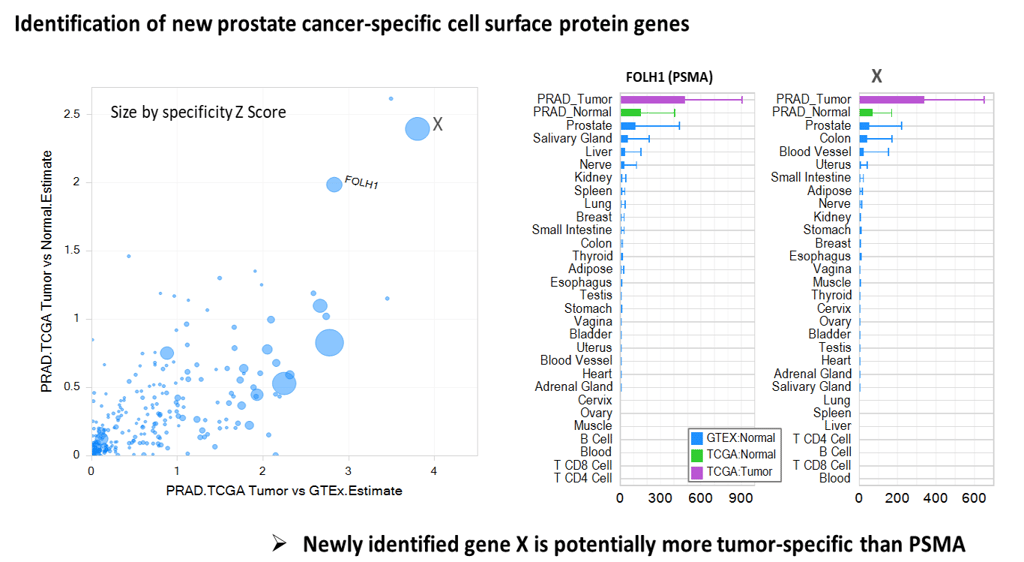

Omicsoft User Group Meeting, 2017, Cambridge, MA. “Mining tumor-specific cell surface protein genes and alterations”. TCGA’s paired normal tissues are not truly normal and the coverage is limited, so integration with large normal tissue data collection such as GTEx ensures identifying large number of truly tumor-specific genes and alterations.
Integrating large number of disease studies from internal and external sources provides high statistic power to detect true disease signals among various confounding factors and noises.

Target/Biomarker ID & Validation

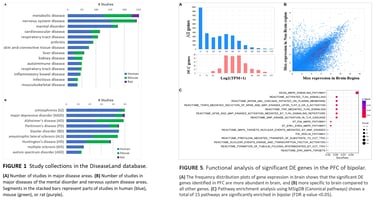
Front Genet. 2019 April 30;10:396. “Integrative analysis of DiseaseLand Omics Database for Disease Signatures and Treatments: A Bipolar Case Study”
Examples illustrated in our services are from published work authored by Insilico Biosystems team members
2. Target Identification through Systematic Mining of Integrated Data (Neurosciences)
Integrating a large number of disease studies from internal and external sources provides higher statistical power to detect true disease signals among various confounding noises.

Target/Biomarker ID & Validation
3. Target Validation through In-Silico and Wet Lab Assessment.
Examples illustrated in our services are from published work authored by Insilico Biosystems team members
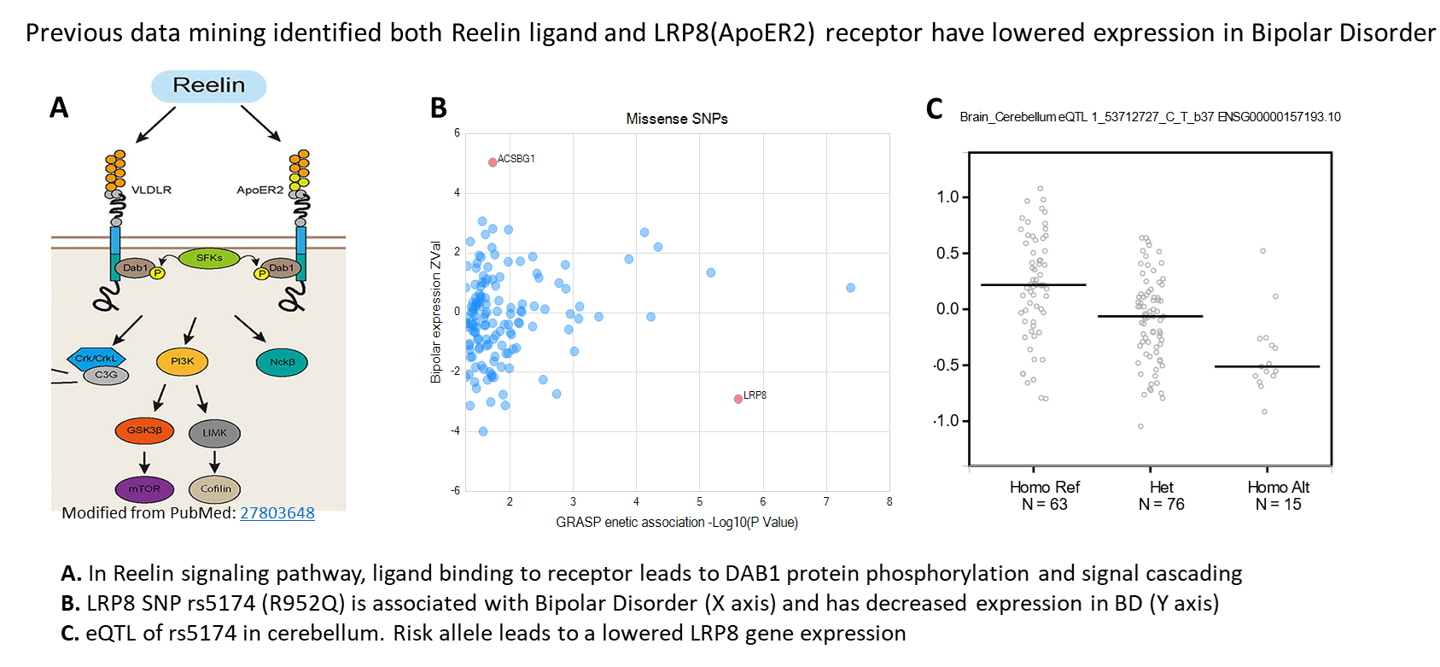

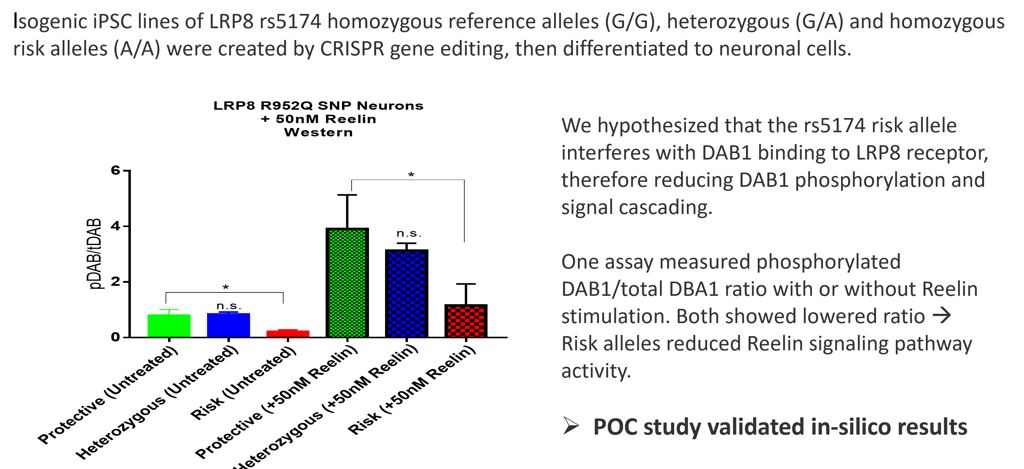

1. In-Silico Validation
2. POC Study in Model System
ACNP 58th Annual Meeting, 2019, Orlando, FL. ”Meta-Analysis Identification and Modeling of a Bipolar Disorder Risk Mutation in LRP8 Using Human Induced Pluripotent Stem Cells"
In-Silico evaluation of candidate targets by utilizing genetic (GWAS, PheWAS, eQTL, …), pathway, literature and other data, followed by proof-of-concept studies in model systems.

Target/Off-Target Safety Assessment
Target safety assessment is part of target identification and validation at early stage. Compound specific safety issues, such as on-target/off-tumor and off-target, may arise as a project advances. A compound of any modality often binds to off-targets in addition to its primary target(s). Different approaches shall be applied to identify off-targets and to address safety consequences of such off-target perturbation along portfolio stages.
Br J Pharmacol. 2023 Feb;180(4):401-421. “Identification and characterization of select oxysterols as ligands for GPR17”. GPR17 is a target for psychiatric disease indication. Bulk and single cell RNA-Seq of comprehensive human and mouse tissues identified GPR17 is specifically expressed in oligodendrocyte and its progenitor cells in brain among all tissue and cell types. It determined that the target will unlikely have mechanistic safety issue and does not require intracerebral drug delivery.
Examples illustrated in our services are from published work authored by Insilico Biosystems team members
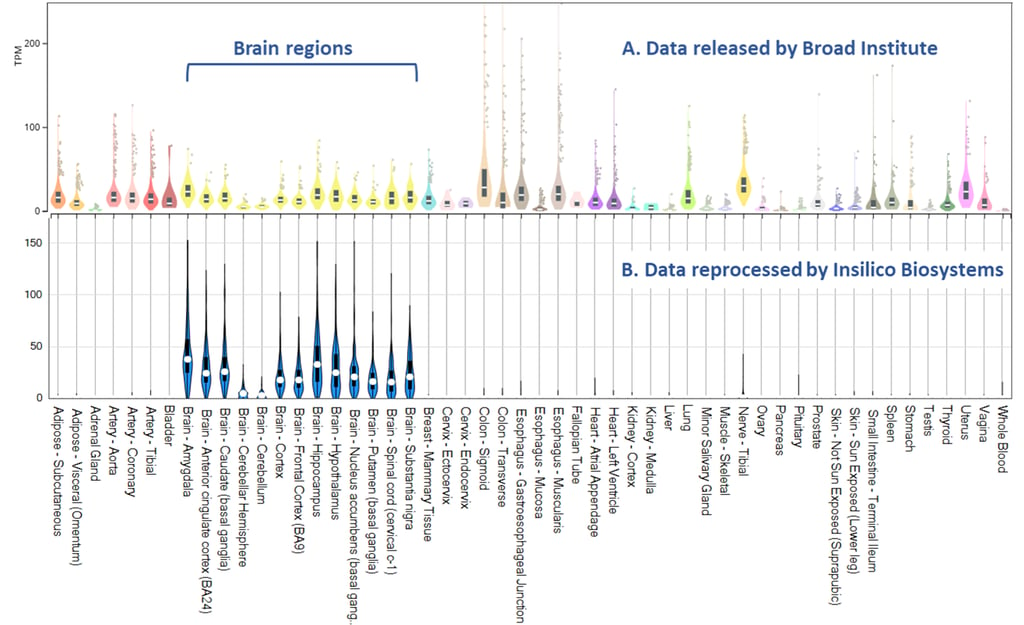

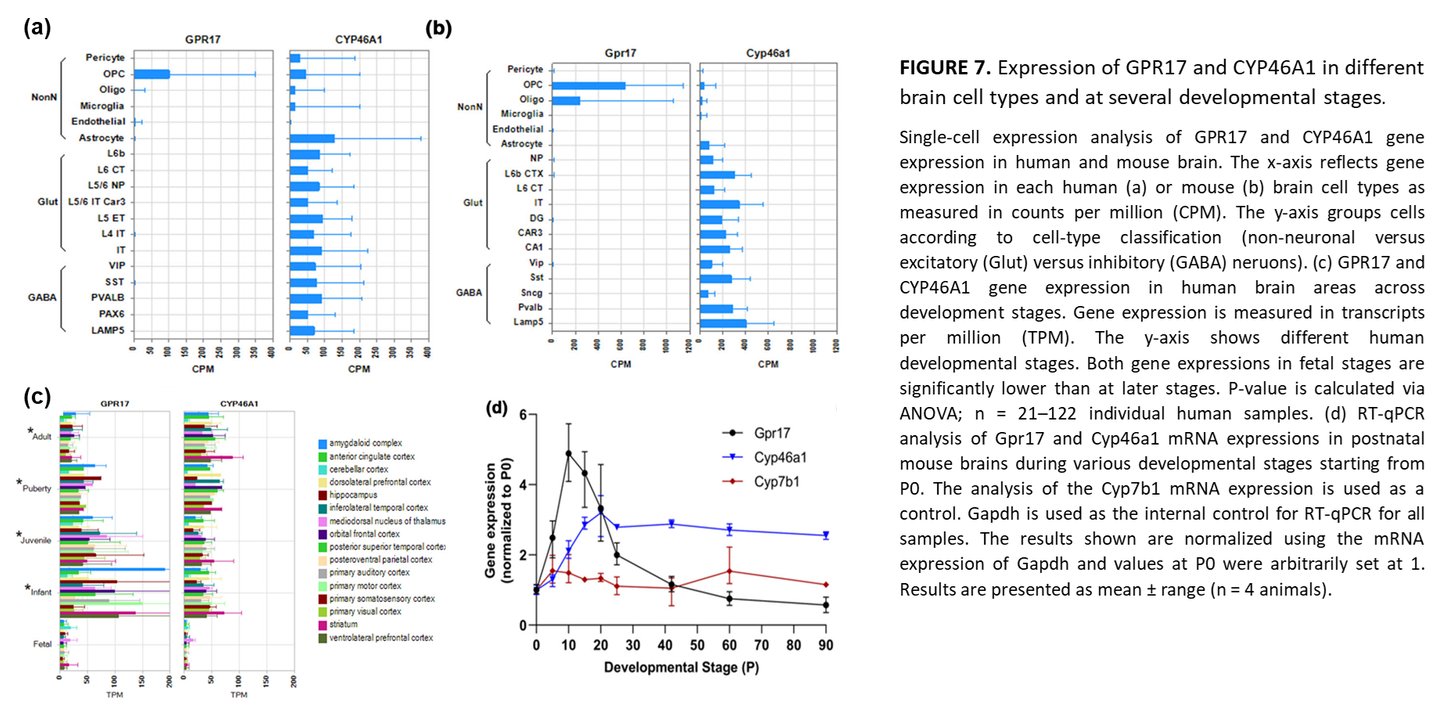

1. GPR17 is specifically expressed in brain tissues
A. GTEx (V8) RNA-Seq data released by Broad Institute shows that GPR17 is broadly expressed.(https://gtexportal.org/home/gene/GPR17)
B. Insilico Biosystems reprocessed the same raw data set using new QC and expression quantification methods. It identified that GPR17 is specifically expressed in brain
2. GPR17 is specifically expressed in oligodendrocyte progenitor cells and higher in infant than adult

Compound Profiling & Safety Assessment
1. AI-driven prediction for lead identification and optimization
Examples illustrated in our services are from published work authored by Insilico Biosystems team members
Compound-to-protein binding prediction estimates the binding affinity before wet-lab testing. Earlier docking and QSAR methods were slow and limited by rigid protein structures and poor accuracy. Recent deep learning–based, structure-conditioned models can capture full 3D protein–ligand interactions and energy landscapes with much greater generalization and speed, enabling large-scale virtual screening and selectivity profiling.
1.1. Hit Discovery. AI-enabled affinity prediction supports hit discovery by virtually searching compound libraries against individual protein targets to identify high-affinity binders, or across related target families to find selective chemotypes. These predictions enable ranking by potency and selectivity, grouping by scaffold similarity, and identifying unique binding modes that guide efficient lead selection prior to experimental validation. In this demo, the KCGS compound set was searched against the JH2 (pseudokinase) domains of JAK1, JAK2, JAK3, and TYK2 to identify high-affinity and selective binders. Each domain was curated and scored by an AI-augmented structure-based model, generating a compound–target affinity matrix for top binders and JAK-selective chemotypes.
1.2. Secondary Pharmacology The same AI-based framework can be applied to secondary pharmacology by profiling compound binding across known safety panels or other target collections associated with safety concerns. This virtual screening approach helps detect cross-reactivity, binding promiscuity, and potential safety liabilities early in the discovery process. In this demo, the IQ Consortium’s early safety panel, including representative kinases, GPCRs, ion channels, and transporters, was virtually tested with known compounds using the same AI-based affinity prediction framework.
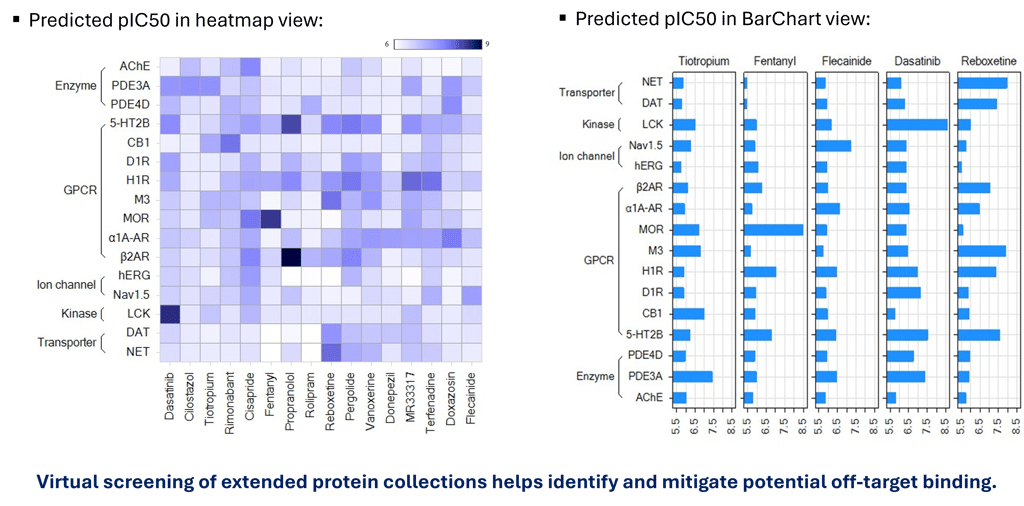


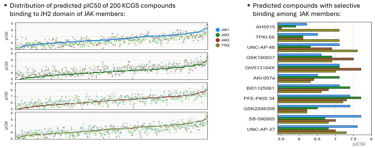
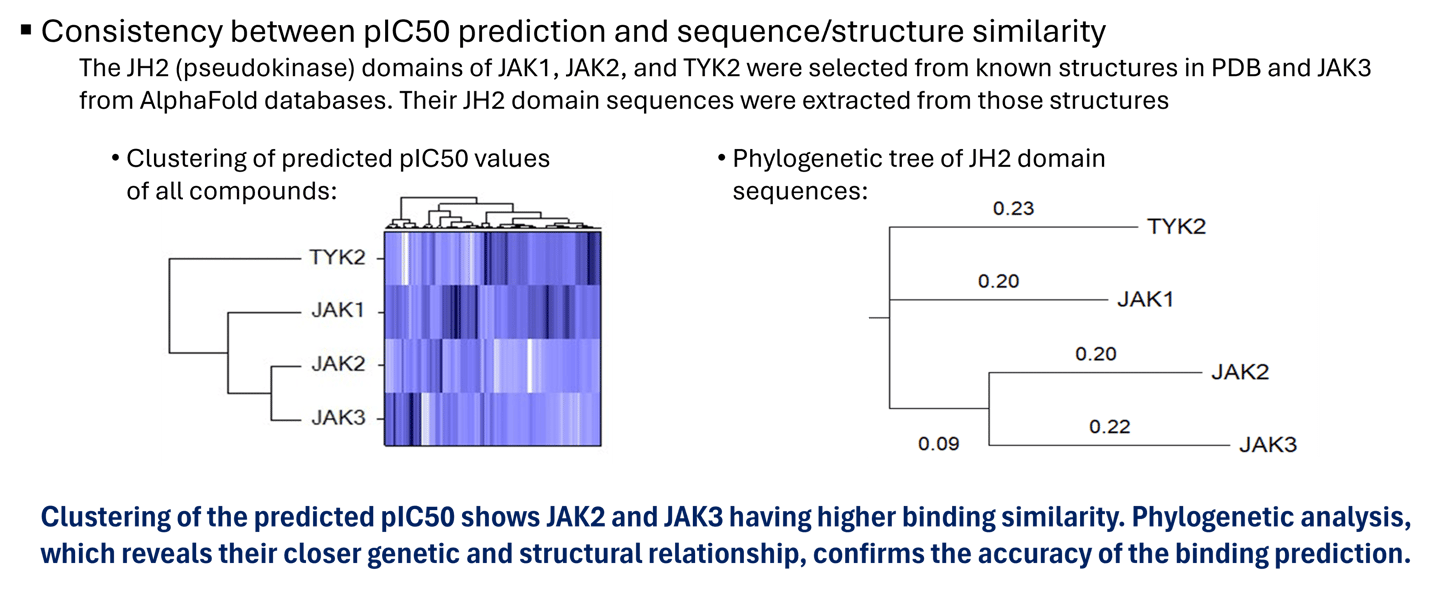


Compound Profiling & Safety Assessment
2. Profiling small-molecule compounds in animal models, by single-cell RNA-Seq
Examples illustrated in our services are from published work authored by Insilico Biosystems team members
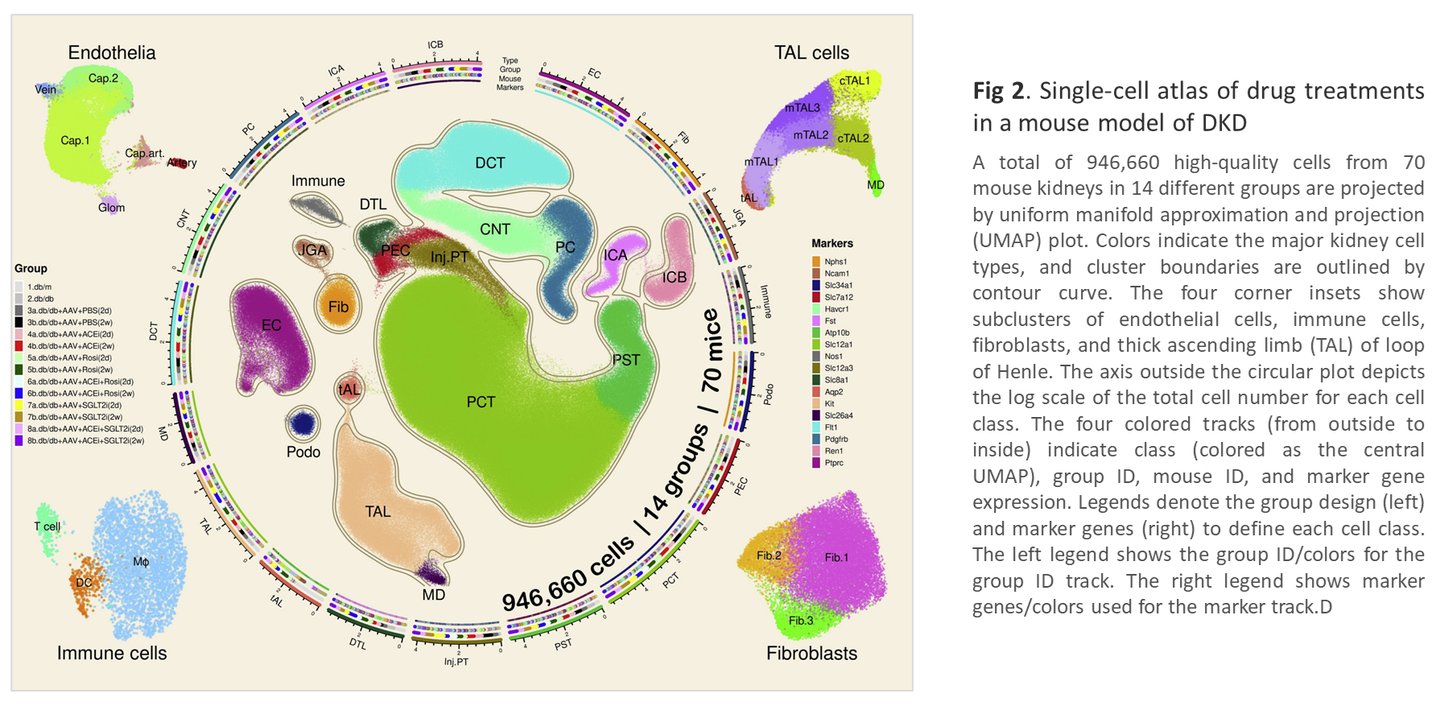

Cell Metabolism. 2022 Jul 5;34(7):1064-1078. “Mapping the Single Cell Transcriptomic Response of Murine Diabetic Kidney Disease to Therapies”

Compound Profiling & Safety Assessment
3. Profiling antibody compound in animal models, by bulk RNA-Seq
Examples illustrated in our services are from published work authored by Insilico Biosystems team members
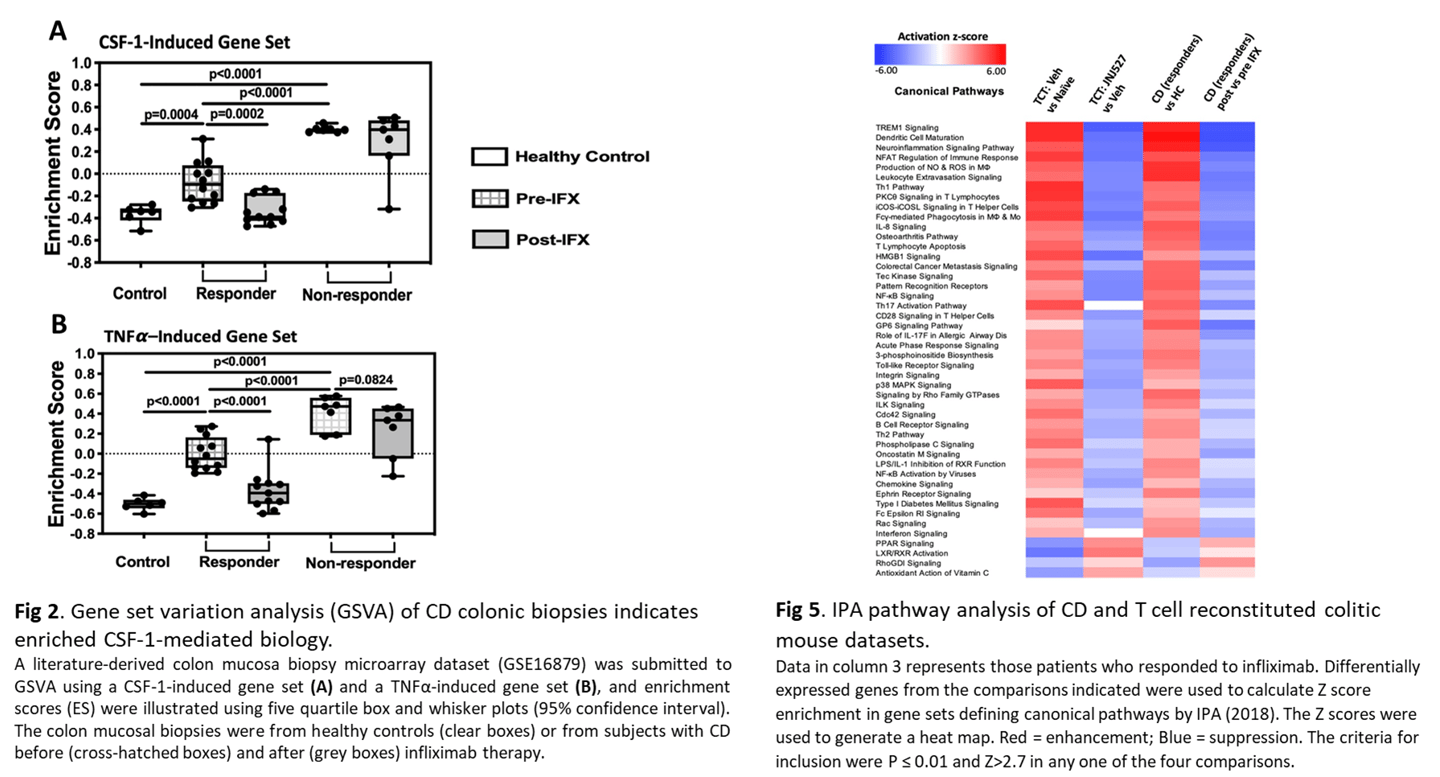

PLoS One. 2019 Nov 11;14(11):e0223918. “The CSF-1-receptor inhibitor, JNJ-40346527 (PRV-6527), reduced inflammatory macrophage recruitment to the intestinal mucosa and suppressed murine T cell mediated colitis”

Compound Profiling & Safety Assessment
4. Safety assessment of an antibody compound in clinical development
Examples illustrated in our services are from published work authored by Insilico Biosystems team members

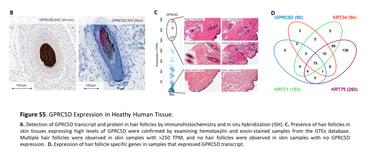
N Engl J Med. 2022 Dec 5;387(24):2232-2244. “Talquetamab, a T Cell Redirecting GPRC5D Bispecific Antibody for Multiple Myeloma”

Compound Profiling & Safety Assessment
5. Safety assessment of a cell therapy after BLA approval
Examples illustrated in our services are from published work authored by Insilico Biosystems team members
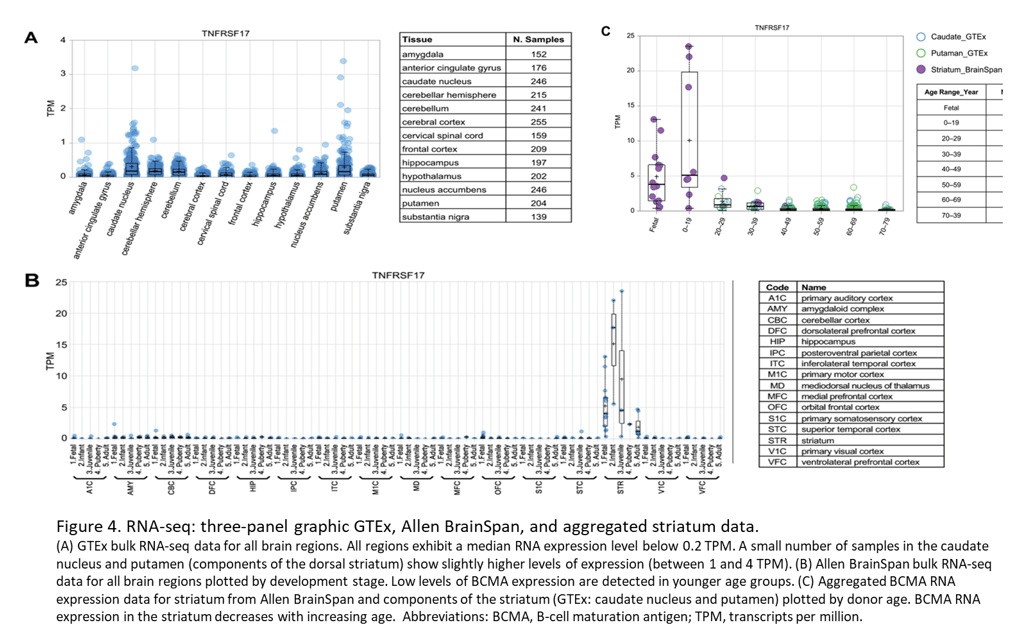

J Histochem Cytochem, 2022 Apr;70(4):273-287. “Comprehensive BCMA expression profiling in adult normal human brain suggests a low risk of on-target neurotoxicity in BCMA-targeting multiple myeloma therapy”
Model Selection & Assay Development
Model systems, such as cell (cell line, Primary and iPSC), 3D spheroid, organoid, organ-on-chip, CDX/PDX, animal (from rodent to NHP), are commonly used in target validation and drug discovery. But their translatability to humans often remains unclear. Systematic assessment of a model’s similarity to human (in overall disease profiling, specific disease pathway, gene network of a drug target, et al.) is essential to select most suitable model system and improve translation.
Examples illustrated in our services are from published work authored by Insilico Biosystems team members
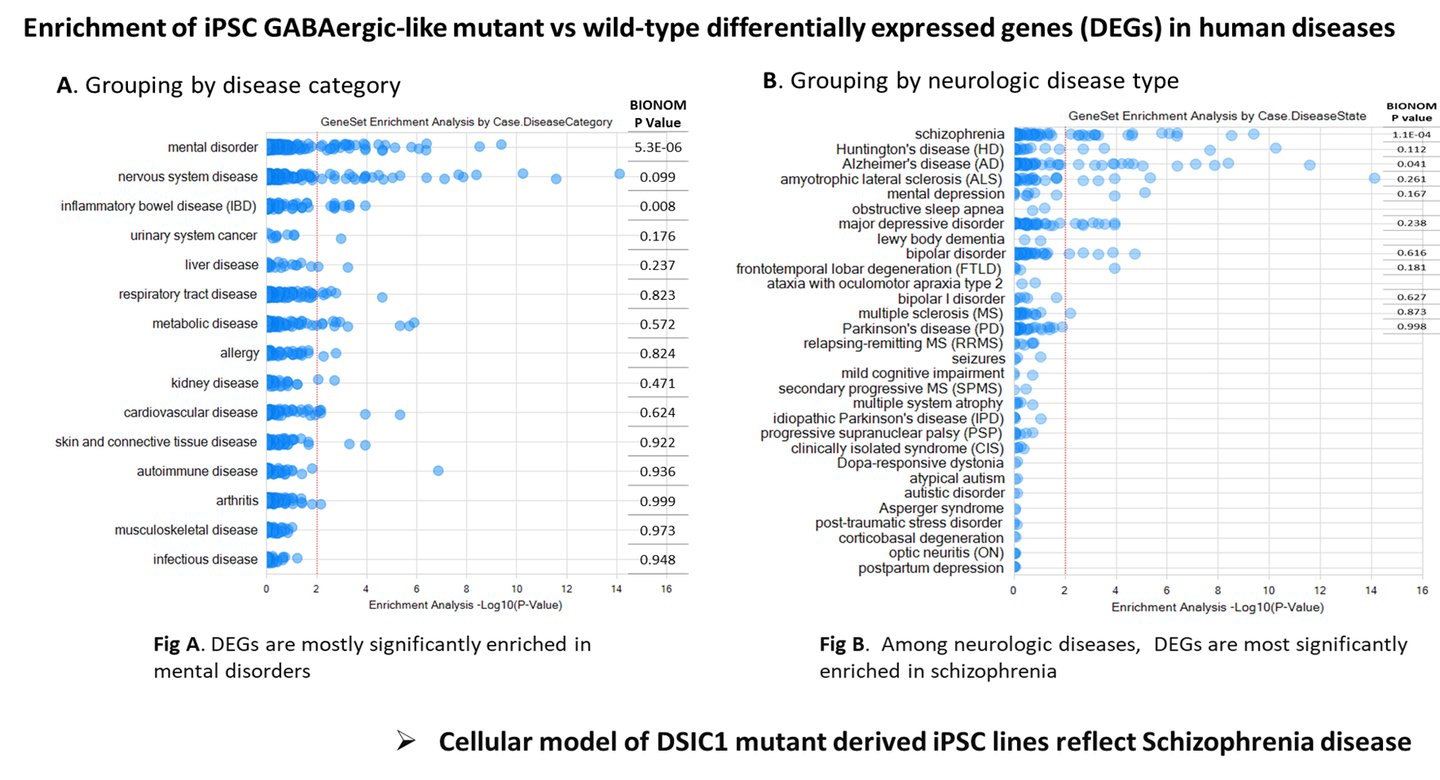

NIH/NIMH National Cooperative Reprogrammed Cell Research Groups (NCRCRG) to Study Mental Illness (U19), 2019. Disrupted-in-Schizophrenia 1 (DISC1) gene mutation is a strong risk factor for schizophrenia. Is DISC1 mutant iPSC a good cellular model for studying schizophrenia disease? In this project, DISC1 mutant iPSC lines were created from patients with the mutation and isogenic wild-type lines through CRISPR repair. iPSC lines were differentiated to GABAergic-like and Glutamatergic-like neurons. RNA-Seq assays were then applied to identify differentially expressed genes (DEGs) between mutant and wild-type neutrons. Finally, DEGs were compared to thousands of studies using human disease samples for assessing enrichment with disease genes in each study.
1. Validating model systems by full-genome comparison
Model Selection & Assay Development
Examples illustrated in our services are from published work authored by Insilico Biosystems team members
2. Assessing model systems and assay methods by disease marker genes
J Neuroinflammation. 2018 May 22;15(1):153. “RNA sequencing analysis reveals quiescent microglia isolation methods from postnatal mouse brains and limitations of BV2 cells”
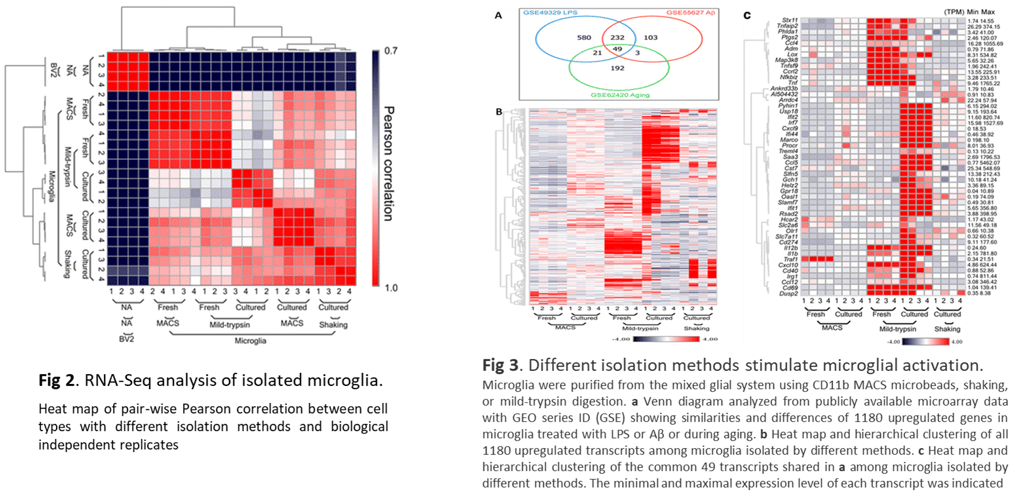

Model Selection & Assay Development
Examples illustrated in our services are from published work authored by Insilico Biosystems team members
3. Species selection by target sequence and expression analysis
Omicsoft User Group Meeting, 2017, Cambridge, MA. Multiple pharma companies worked on Sodium-Glucose Transporter 1 (SGLT1) as a target for diabetes indications. The protein is highly conserved across species (Mouse: 87.8%, Rat: 87.7%, Dog: 86.5%, Cyno: 95.9% and Chimpanzee: 98.8% when compared to human). But in cardiovascular tissues, it’s only expressed in Hominidae and not even in Rhesus or Cynomolgus monkeys. Therefore, cardiotoxicity studies using common nonclinical species do not address on-target safety questions.
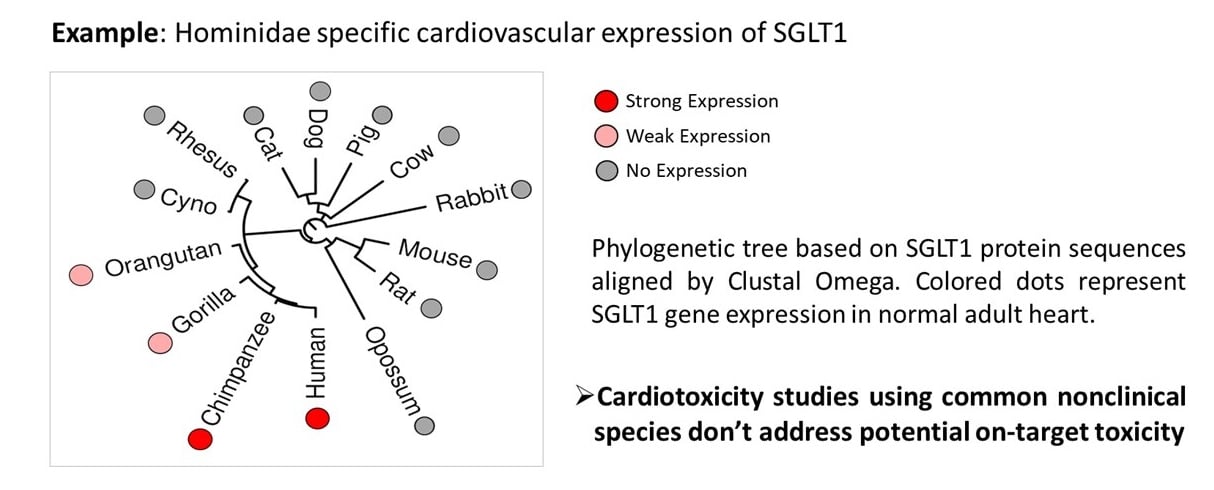

Model Selection & Assay Development
Examples illustrated in our services are from published work authored by Insilico Biosystems team members
4. Comprehensive comparison between human and nonclinical species
Targets, disease pathway genes, drug-metabolizing enzymes, and transporters are often differentially expressed between humans and nonclinical species. Comprehensive profiling of these genes across species is important for understanding the translatability of efficacy, safety, and ADME (Absorption, Distribution, Metabolism, and Excretion) results from preclinical in vivo studies. We have built RNA-Seq gene expression databases at both the bulk tissue and single-cell levels to support comprehensive profiling of genes across species.



Disease Profiling & Subtyping
1. Profiling key disease genes using transcriptomics and literature data
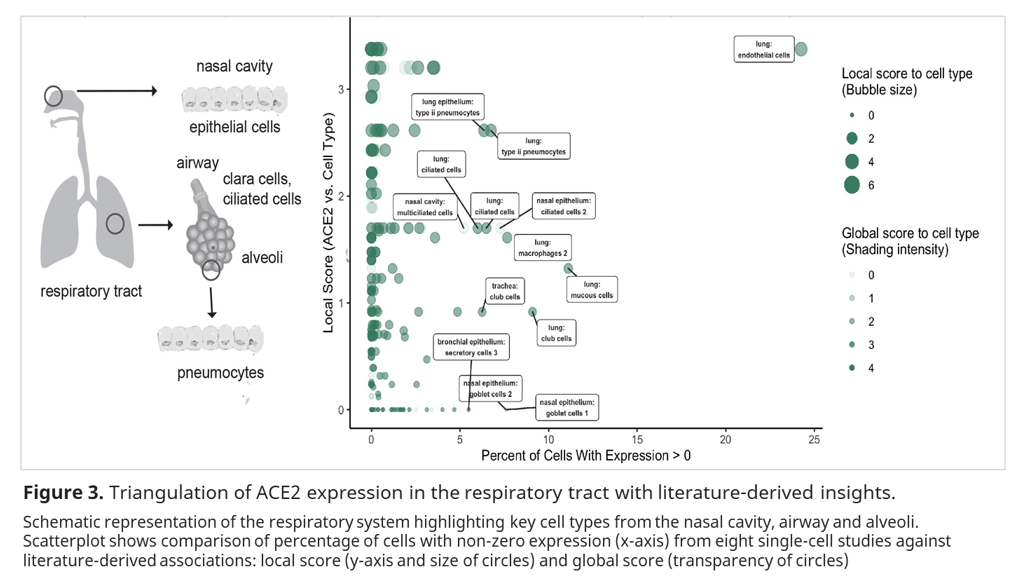

Elife. 2020 May 28;9:e58040. “Knowledge synthesis of 100 million biomedical documents augments the deep expression profiling of coronavirus receptors”
Examples illustrated in our services are from published work authored by Insilico Biosystems team members

Disease Profiling & Subtyping
2. Subtyping disease based on epigenetic modification
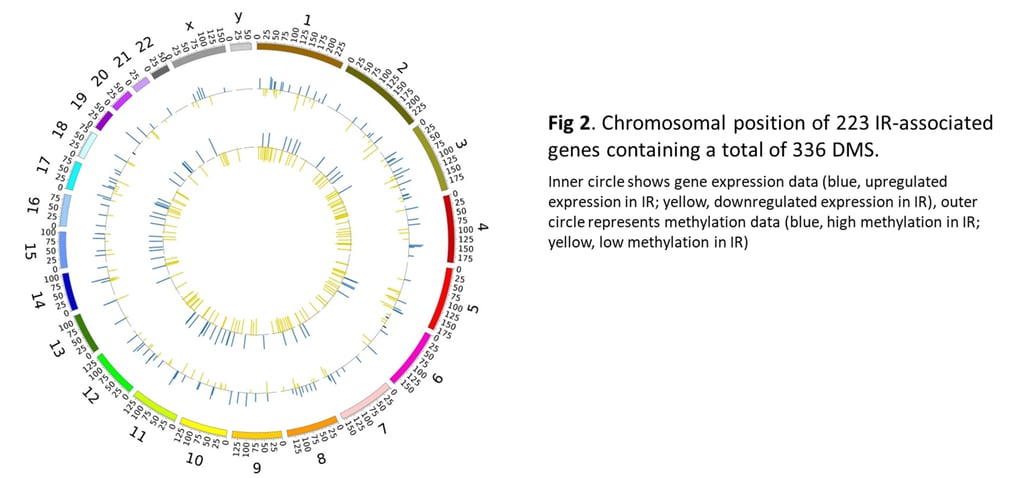

Diabetologia. 2016 Nov;59(11):2393-2405. “The epigenetic signature of systemic insulin resistance in obese women”
Examples illustrated in our services are from published work authored by Insilico Biosystems team members

Disease Profiling & Subtyping
3. Mimicking disease signaling in model systems of Neuroinflammation
Examples illustrated in our services are from published work authored by Insilico Biosystems team members
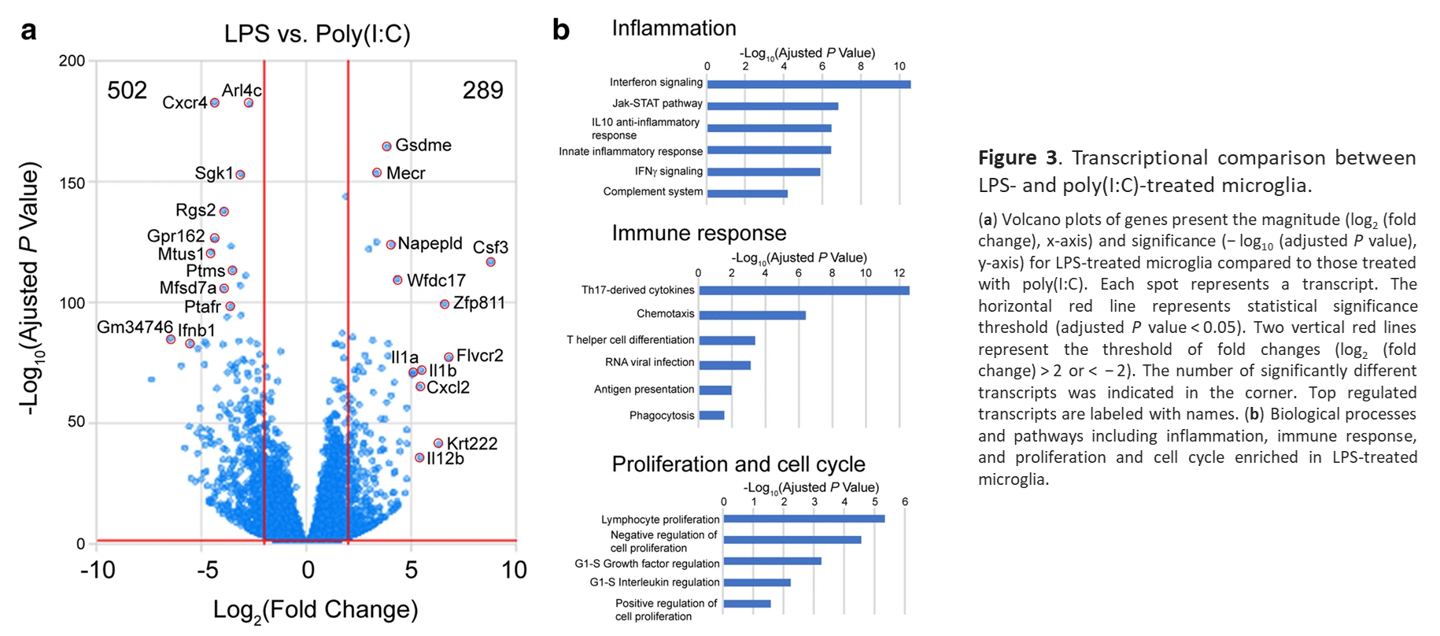

Sci Rep. 2021 May 17;11(1):1-14. “Mouse primary microglia respond differently to LPS and poly (I:C) in vitro”

Big Data Management & Computing
Big data is big in volume at early processing stages. Its final findings in executive summary can be a one-pager. Along many stages of data flow from big raw data to one-pager executive summary, there are different requirements on storage, computing, user access, compliance, and others.
Bio-IT World Conference & Expo, 2014. “Multi-tier Big Data Computing and Management”
Examples illustrated in our services are from published work authored by Insilico Biosystems team members
